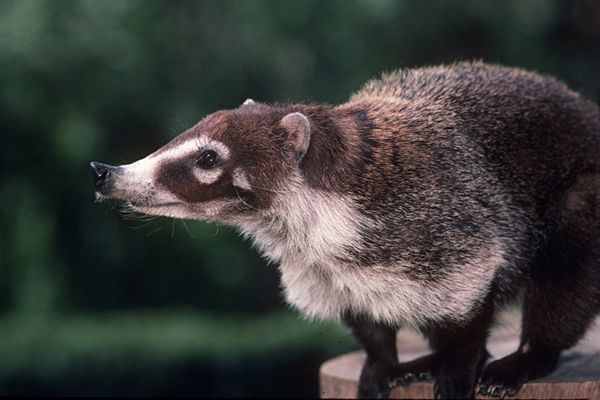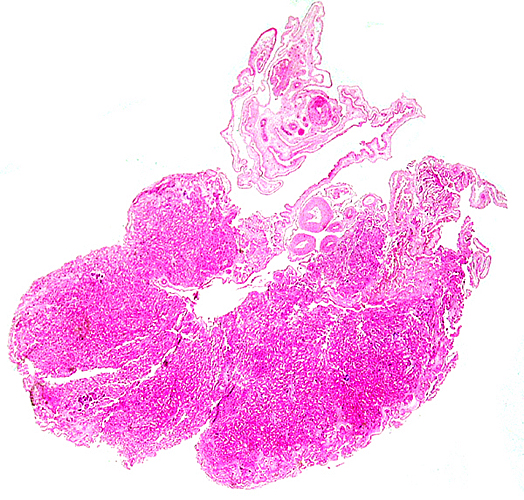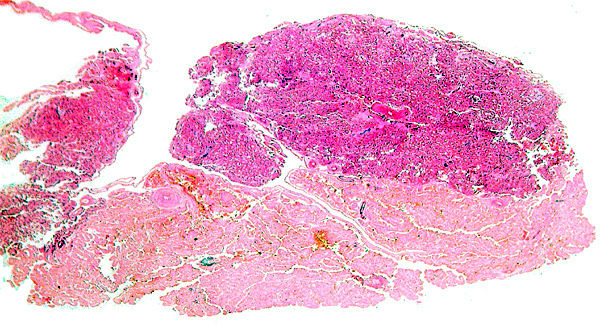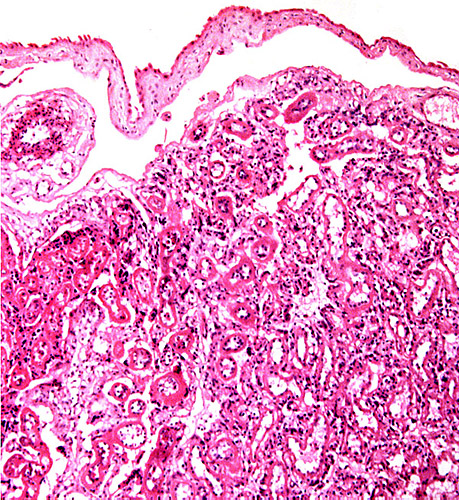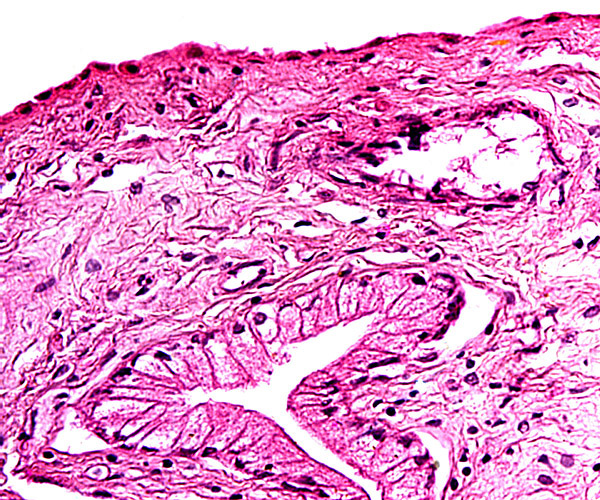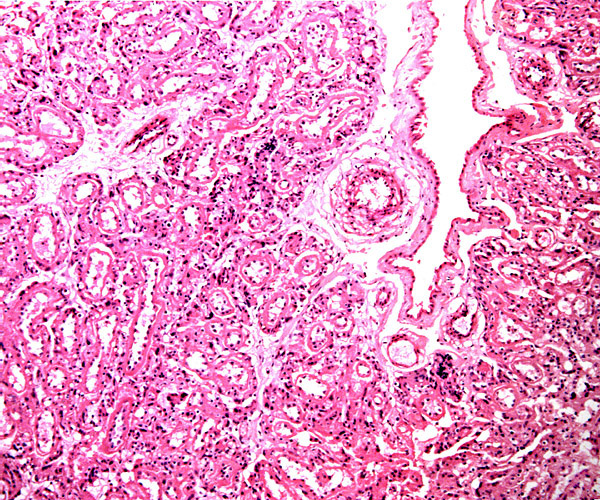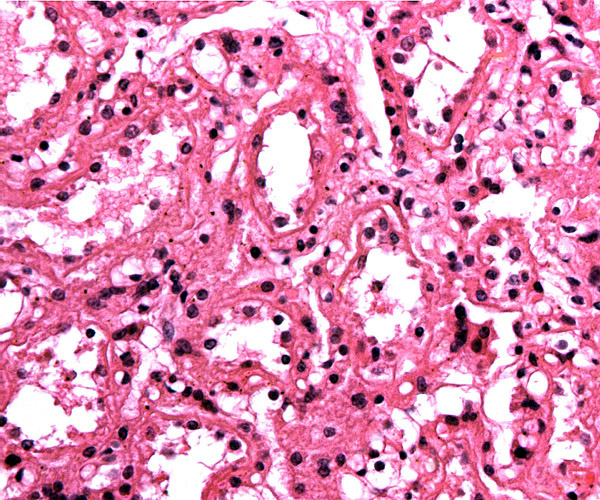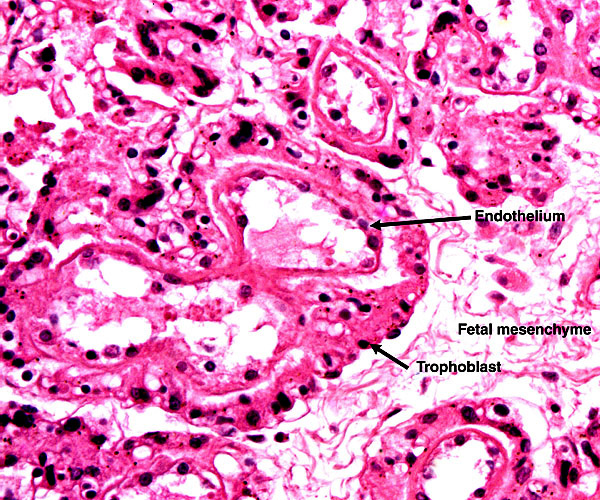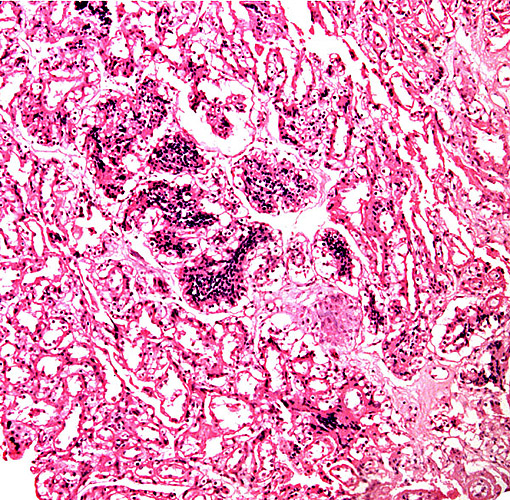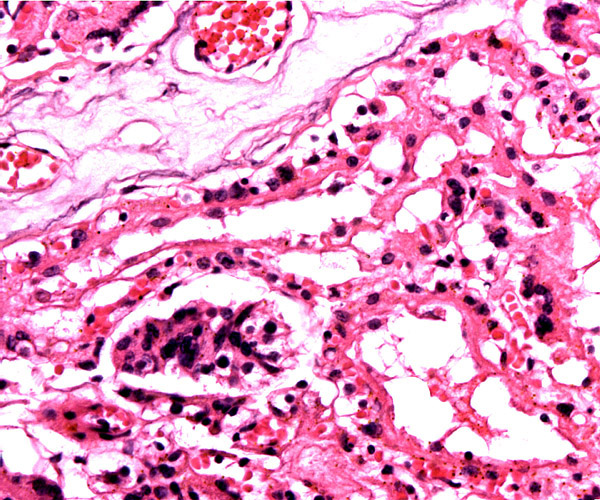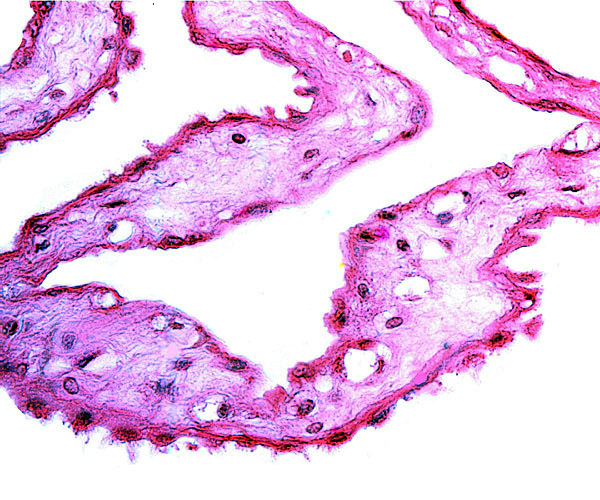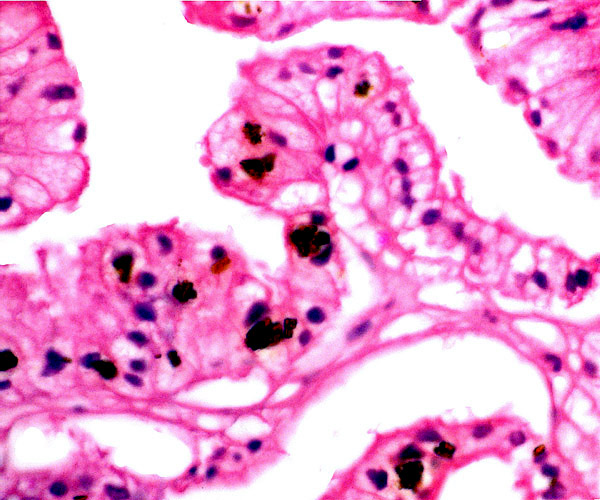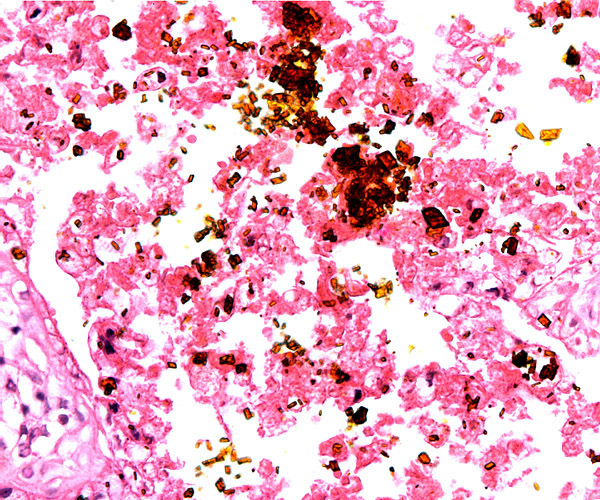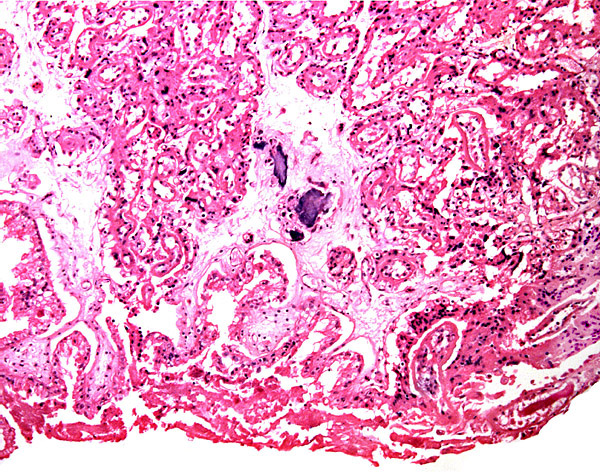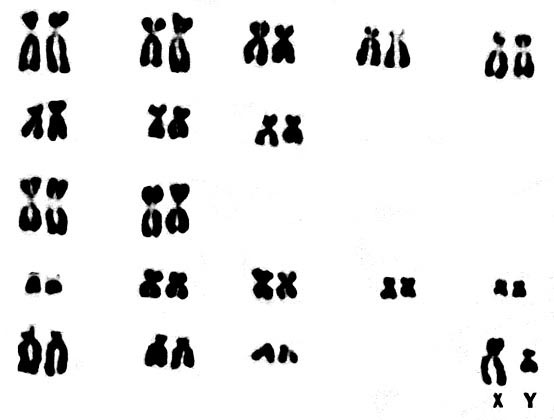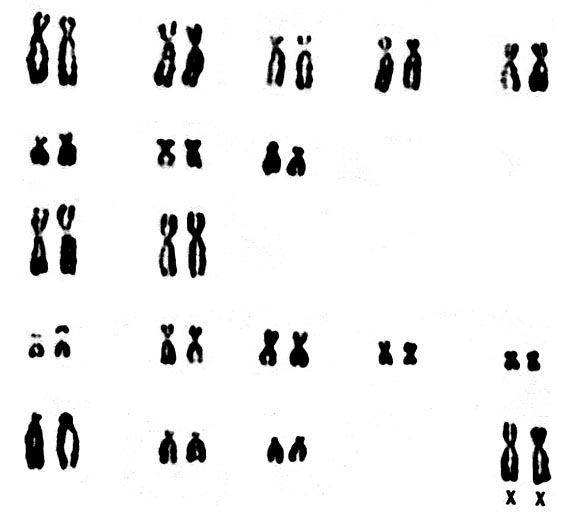14) Immunology
Costa et al. (1995) studied the delayed hypersensitivity reaction to paracoccidioidin in captive arboreal vs. terrestrial animals of Brazil ; they found the former to have a much lower reactivity (22 vs. 83%).
15) Pathological features
Reppas et al. (2001) described two coatimundis with what were interpreted to be bilateral pheochromocytomas. Infectious diseases are important problems for coatis. Thus, Lainson & Shaw (197905) reported fatal pneumocystis infection and, later (1979), they identified organisms similar to Trypanosoma cruzi (the cause of Chagas' disease) in coatis and considered this as a possible health hazard for humans. Trypanosoma evansi, the cause of an important equine disease in Brazil, was isolated from coatis by Quiroz et al. (2000) An experimental study of infecting coatis with this agent led to severe anemia, myocarditis and encephalitis (Herrera et al., 2002). Griner (1983) found tuberculosis (Mycobacterium tuberculosis) in two animals at the San Diego Zoo. This led to the euthanasia of the remainder of animals in the colony which disclosed only dermatitis and mite infection.
Numerous infectious and parasitic afflictions have been described for this species. Thus, Schmidt (1977) identified Onicola luehei in animals from Paraguay; Trypanosoma cruzi-like organisms were identified by Lainson et al. (1979) in Brazilian animals; Trypanosoma evansi was isolated from coatis by Quieroz et al. (2000) and the course of infection followed after experimental transmission (Herrera et al. (2002); Leptospira were isolated from kidneys of Nasua by Lins & Lopes (1984); Toxocara cancrivorus was found by Sprent (1982); Valenzuela et al. (2000) described an epizootic of mange (due to Notoedres cati) in Mexico; Salgado-Maldonado & Cruz-Reyes (2002) found the acantocephalan Porrorchis nickoli also in Mexican animals; fatal infection with Pneumocystis carinii in a freshly-caught coati from the Amazonas; Baird & Neafie (1988) refer to infection with Brugia guyanensis a nematode from South America; over 80% of Brazilian coatis tested positive in an epidemiological study of histoplasmosis, and 65% for antigens of sporotrichosis; Leishmania shawi was found in coatis from Brazil by Lainson et al. (1989) who subsequently studied the possible origin of this infection in patients (Shaw et al., 1991); the animal described here had died from cryptosporidiosis, and Jatobal virus was isolated from a coati in Brazil.
Chittick et al. (2001) described pyometra and an endometrial carcinoma in a coati that had been implanted with melengestrol acetate for 4.5 years.
16) Physiologic data
Boggs & Irvine (1992) studied the respiratory mechanics of coatimundis and found them to be significantly different from the breathing patterns of woodchucks in that the coati had a larger tidal volume. Grant et al. (1976) had earlier made systematic studies of the regulation of pulmonary blood flow. Brimhall et al. (1979) as well as Ahmed et al. (1990) studied hemoglobin composition of coatis, mink and hyenas, while Urashima et al. (1999) examined the milk saccharides of coatis and identified two novel pentasaccharides. McClearn (1985) studied the fiber length of skeletal muscle fibers of distal arm and leg muscles in coatis and compared them with those of the raccoon. The coati is primarily diurnal, while the activity of kinkajou and raccoon occur mainly at night. For that reason, Jacobs & Deegan (1992) studied their retinal pigment and found that the nocturnal species were monochromatic, while the coati was dichromatic.
17) Other resources
Cell strains of a number of Coatimundis can be made available from CRES at San Diego Zoo by contacting Dr. Oliver Ryder at oryder@ucsd.edu.
18) Other remarks - What additional Information is needed?
There have been no descriptions of early stages of coati placentation; they are badly needed. Likewise, a better description of allantois and length of umbilical cord are needed. There are no endocrine studies, despite the relative wide distribution of the species in the Americas and in zoos.
Acknowledgement
The animal photograph in this chapter comes from the Zoological Society of San Diego
References
Ahmed, A., Jahan, M. and Braunitzer, G.: Carnivora: the primary structure of hemoglobin from adult coati (Nasua nasua rufa, Procyonidae). J. Protein Chem. 9:23-29, 1990.
Baird, J.K. and Neafie, R.C.: South American brugian filariasis: report of a human infection acquired in Peru . Amer. J. Trop. Med. Hyg. 39:185-188, 1988.
Beisiegel, B.M.: Notes on the coati, Nasua nasua (Carnivora: Procyonidae) in an Atlantic forest area. Braz. J. Biol. 61:689-692, 2001.
Biggers, J.D. and Creed, R.F.S.: Two morphological types of placentae in the raccoon. Nature 194:103-105, 1962.
Boggs, D.F. and Irvin, C.G.: Respiratory mechanics of the coatimundi and woodchuck. Respir. Physiol. 89:147-155, 1992.
Brimhall, B., Stenzel, P., Dresler, S.L., Hermodson, M., Stangland, K., Joyce, J. and Jones, R.T.: On the tryptic peptides from hemoglobin chains of six carnivores. J. Mol. Evol. 9:237-260, 1977.
Brimhall, B., Stangland, K., Jones, R.T., Becker, R.R. and Bailey, T.J.: Tryptic peptide composition of hemoglobins from mink (Mustela vison) and hyena (Hyaenae hyaenae) and the alpha-chain of coatimundi (Nasua nasua). Hemoglobin 3:271-292, 1979.
Chittick, E., Rotstein, D., Brown, T. and Wolfe, B.: Pyometra and uterine adenocarcinoma in a megestrol acetate-implanted captive coati (Nasua nasua). J. Zoo Wild. Med. 32:245-251, 2001.
Costa, E.O., Diniz, L.S., Netto, C.F., Arruda, C. and Dagli, M.L.: Epidemiological study of sprorotrichosis and histoplasmosis in captive Latin American wild mammals, Sao Paulo , Brazil . Mycopathologia 125:19-22, 1994.
Costa, E.O., Diniz, L.S., Netto, C.F., Arruda, C. and Dagli, M.L.: Delayed hypersensitivity test with paracoccidioidin in captive Latin American wild mammals. J. Med. Vet. Mycol. 33:39-42, 1995.
Creed, R.F.S. and Biggers, J.D.: Development of the raccoon placenta. Amer. J. Anat. 113:417-445, 1963.
Creed, R.F.S. and Biggers J.D.: Placental haemophagous organs in the procyonidae and mustelidae. J. Reprod. Fertil. 8:133-137, 1964.
Gompper , M.E. , Gittleman, J.L. and Wayne , R.K.: Dispersal, philopatry, and genetic relatedness in a social carnivore: comparing males and females. Mol. Evol. 7:157-1634, 1998.
Gotch, A.F.: Mammals - Their Latin Names Explained. Blandford Press, Poole, Dorset, 1979.
Grant, B.J., Davies, E.E., Jones, H.A. and Hughes, J.M.: Local regulation of pulmonary blood flow and ventilation ratios in the coatimundi. J. Appl. Physiol. 40:216-228, 1976.
Griner, L.A.: Pathology of Zoo Animals. Zoological Society of San Diego, San Diego, California, 1983.
Herrera, H.M., Alessi, A.C., Marques, L.C., Santana, A.E., Aquino, L.P., Menezes, B.F., Moraes, M.A. and Machado, R.Z.: Experimental Trypanosome evansi infection in South American coati (Nasua nasua): hematological, biochemical and histopathological changes. Acta Trop. 81:203-210, 2002.
Hsu, T.C. and Arrighi, F.E.: Karyotypes of 13 carnivores. Mammal. Chromosom. Newsl. 21:155, 1966.
Hsu, T.C. and Benirschke, K.: A Mammalian Chromosome Atlas. Volume 4, Folio 183, 1970. Springer-Verlag, N.Y.
Jacobs, G.H. and Deegan, JF 2nd.: Cone photopigments in nocturnal and diurnal procyonids. J. Comp. Physiol. (A) 171:351-358, 1992.
Jones, M.L.: Longevity of captive mammals. Zool. Garten 52:113-128, 1982.
Lainson, R. and Shaw, J.J.: Pneumocystis and histoplasma infections in wild animals from the Amazon region of Brazil. Trans. Roy. Soc. Trop. Med. Hyg. 69:505-508, 1975.
Lainson, R., Shaw, J.J., Fraiha, H., Miles, M.A. and Draper, C.C.: Chagas' disease in the Amazon Basin: 1. Trypanosoma cruzi infections in silvatic mammals, triatome bugs and man in the State of Para, north Brazil. Trans. Roy. Soc. Trop. Med. Hyg. 73:193-204, 1979.
Lainson, R., Braga , R.R., de Souza, A.A., Povoa, M.M., Ishikawa, E.A. and Silveira, F.T.: Leishmania (Viannia) shawi sp. N., a parasite of monkeys, sloths and procyonids in Amazonia Brazil . Ann. Parasitol. Hum. Comp. 64:200-207, 1989.
Leone , C.A. and Wiens, A.L.: Comparative serology of carnivores. J. Mammal. 37:11-23, 1956.
Lins, Z.C. and Lopes, M.L.: Isolation of Leptospira from wild forest animals in Amazonian Brazil. Trans. R. Soc. Trop. Med. Hyg. 78:124-126, 1984.
McClearn, D.: Anatomy of raccoon (Procyon lotor) and coati (Nasua narica and N. nasua) forearm and leg muscles: relations between fiber length, moment-arm length, and joint-angle excursion. J. Morphol. 183:87-115, 1985.)
Mossman, H.W.: Vertebrate Fetal Membranes. MacMillan, Houndmills, 1987.
Mossman, H.W. and Duke, K.L.: Comparative Morphology of the Mammalian Ovary. University of Wisconsin Press, Madison, Wisconsin, 1973.
Nowak, R.M.: Walker's Mammals of the World. 6th ed. The Johns Hopkins Press, Baltimore, 1999.
Panzetta, P. and Alaimo, I. : Karyotype of the coati (Coati nasua solitaria Schinz). Mammal. Chromosom. Newsl. 8:97, 1967.
Pauly, L.K. and Wolfe, H.R.: Serological relationships among members of the order Carnivora. Zoologica 42:159-166, 1957.
Quieroz, A.O., Nehme-Russell, N.S., Brandao, A. and Jansen, A.M.: Homogeneity of Trypanosoma evansi isolates from domestic and sylvatic mammals from the Pantanal of Mato Grosso. Microbios 103:27-30, 2000.
Reppas, G.P., Bodley, K.B., Watson, G.F. and Wills, E.J.: Phaeochromocytoma in two coatimundis (Nasua nasua) Vet. Rec. 148:806-809, 2001.
Saeed, M.F., Wang, H., Suderman, M., Beasley, D.W., Travassos da Rosa, A., Li, L., Shope, R.E., Tesh, R.B. and Barrett, A.D.: Jatobal virus is a reassortant containing the small RNA of Oropouche virus. Virus Res. 77:25-230, 2001.
Salgado-Maldonado, G. and Cruz-Reyes, A.: Porrorchis nickoli n. sp. (Acanthocephala: Plagiorhynchidae) from mammals in southeastern Mexico , first known occurrence of Porrorchis in the western hemisphere. J. Parasitol. 88:146-152, 2002.
Schmidt, G.D.: Onicola martini sp. n., and other archiacanthocephala of the Chaco Boreal, Paraguay . J. Parasitol. 63:508-510, 1977.
Shaw, J.J., Ishikawa, E.A., Lainson, R., Braga, R.R. and Silveira, F.T.: Cutaneous leishmaniasis of man due to Leishmania (Vianna) shawi Lainson, de Souza, Povoa, Ishikawa & Silveira, in Para State, Brazil. Ann. Parasitol. Hum Comp. 66:243-246, 1991.
Sprent, J.F.: Ascaridoid nematodes of South American mammals, with a definition of a new genus. J. Helminthol. 56:275-295, 1982.
Starck, D.: Ueber die Länge der Nabelschnur bei Säugetieren. Z. Säugetierk. 22:77-86, 1957.
Timock, J. and Vaughan, C.: A census of mammal populations in Punta Leona Private Wildlife Refuge, Costa Rica . Rev. Biol. Trop. 50:1169-1180, 2002.
Todd, N.B., York , R.N. and Pressman, S.R.: The karyotypes of the raccoon (Procyon lotor L.), Coatimundi (Nasua narica L.) and kinkajou (Potos flavus Schreber). Mammal. Chromosom. Newsl. 8:97, 1966.
Urishima, T., Yamamoto, M., Nakamura, T., Arai, I., Saito, T., Namiki, M., Yamaoka, K. and Kawahara, K.: Chemical characterization of the oligosaccharides in a sample of milk of a white-nosed coati, Nasua narica (Procyonidae, Carnivora). Comp. Biochem. Physiol. A Mol. Integr. Physiol. 123:187-193, 1999.
Vacek, Z.: Placenta of Nasua rufa L. Biol. Listy 31 (suppl.):155-163, 1951.
Valenzuela, D., Ceballos, G. and Garcia, A.: Mange epizootic in white-nosed coatis in western Mexico . J. Wildl. Dis. 36:56-63, 2000.
Watson, M.: On the female organs and placentation of the raccoon (Procyon lotor). Proc. Roy. Soc. London 32:272-298, 1881.
Wilson, G.G.: Splendid Isolation. The curious History of South American Mammals. Yale University Press, New Haven, 1980.
Wurster, D.H. and Benirschke, K.: Comparative Cytogenetic studies in the order Carnivora. Chromosoma 24:336-382, 1968.
Wurster-Hill, D.H. and Gray, C.W.: The interrelationships of chromosome banding patterns in procyonids, viverrids, and felids. Cytogenet. Cell Genet. 15:306-331, 1975.
Zhang, Y.P. and Ryder, O.A.: Mitochondrial DNA sequence evolution in the Arctoidea. Proc. Nat. Acad. Sci. USA 90:9557-9561, 1993.
|
